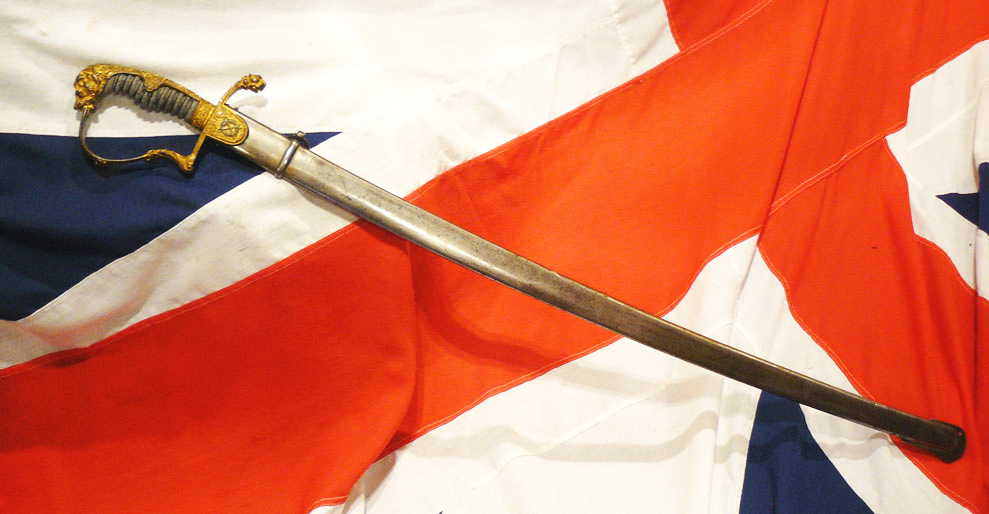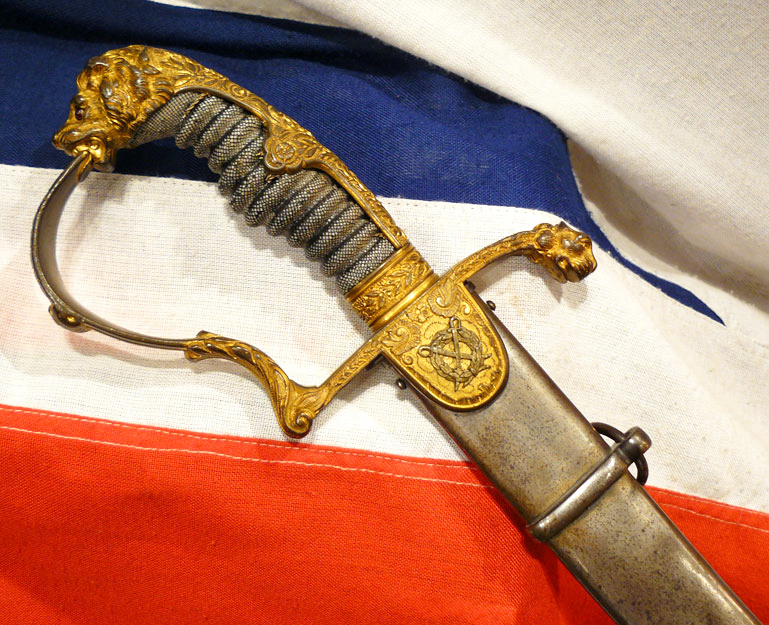An Original, Incredibly Rare 'Damascus' Presentation Sword, An Imperial German, Damascus Steel and Gold, Sword Presented by One of Germany’s Most Powerful and Influential Families in 1887
This is a magnificent example of one of the rarest most desirable and valuable German swords made in 200 years. Made by Numan of Berlin, personally, for Baron Von Hammerstein. One of two similar museum grade Imperial German swords we were delighted and privileged to acquire, and certainly one of the very best examples, with the highest of provenanced pedigrees ever to come onto the open market.
The highest grade possible of German military sword to be commissioned during the 19th and 20th centuries, encompassing the Imperial, Weimar and Third Reich eras of Germany.
This fabulous sword was presented by Baron von Hammerstein, one of the great military commanders, from one of the greatest of families of the Imperial German empire, whose influence and power continued through the demise of the empire in 1918, right through the post WW1 Weimar period and into the notorious Third Reich. This sword would have been used by the recipients family’s officers, right through all of those eras, and continually into the end of the WW2, despite the Von Hammerstein family being fervent anti-nazi. Which in of itself shows just how powerful the family once was, to survive, indeed thrive, being such vocal opponents of Hitler, at least, in private.
A 'Grosse Degan', translates to the ‘great size sword’ is around 50% heavier, wider and substantial, and a far superior quality than the regular officer’s sword of the day. Presented in the late 19th century, these significant and important Damascus swords were effectively, the swords of Kings, worn by the highest ranking officers Generals, Field Marshals, Dukes and Kings right through WW1 and also WW2. For example we show in the gallery Field Marshal von Kleist with his identical family sword, that was also an antique Imperial sabre, but worn by him in WW2.
Also, a photograph of His Majesty King George Vth the Queen's grandfather and Kaiser Wilhelm of Prussia King George's cousin in their ceremonial Colonel-in-Chief uniforms. King George Vth is in his full dress ‘honorary’ Imperial German uniform with pickelhaub helmet and also wearing his identical grade of sword to ours. Before WW2 it was common for foreign kings to be made honorary colonels to other countries regiments. For example until WW1 Kaiser Willhelm was an honorary colonel of a British regiment, the Kaiser’s Own.
Superb condition for age, with its original steel scabbard. German Damascus swords, made with the traditional ‘Damascus steel’ method are incredibly scarce and valuable, and from Imperial Germany are the most desirable of all German swords. This superb example was presented by one of the members of the great German noble families, in Cassel, in 1887. It bears a presentation inscription, given by Ernst Baron von Hammerstein to his friend Rudolf Frank. On the obverse, For Service, Cassel 1887. Ernst von Hammerstein attended high school in Hildesheim, Hanover, the Royal Corps of Cadets, the University of Gottingen and the Forest Academy Mariabrunn in Austria. In 1857 he was a lieutenant in the 3rd Hanoverian Infanterie-Regiment Infantry Regiment and in 1858 First Lieutenant. In 1866 he took part in the Battle of Langensalza. He was, until 1871, in the personal service of King George V of Hanover. The Von Hammersteins had a most influencial part in German history from the 1600's. Ernst's later relative was Commander of the German Army until Hitler took power, and was also a fervent anti Nazi, taking part in several conspiricies, but never caught or imprisoned, until his natural death in 1943Born to a noble family in Hinrichshagen, Mecklenburg-Strelitz, Germany in 1878, Baron von Hammerstein-Equord joined the German Army on 15 March 1898. In 1907 Hammerstein married Maria von Luttwitz, the daughter of Walther von Luttwitz. He was attached to the General Staff during World War I and participated in the Battle of Turtucaia. Hammerstein-Equord was loyal to the Weimar Republic, opposing the Kapp-Luttwitz putsch in 1920. He served as Chief of Staff of the 3rd Division from 1924, as Chief of Staff of the I Group Command in 1929, and as Head of Troops in the Office Ministry of War from 1929. A close friend of Kurt von Schleicher, he was appointed Commander-in-Chief of the Reichswehr in 1930, replacing General Wilhelm Heye. Another was a U Boat Commander in WWII Adolf-Wilhelm von Hammerstein-Equord joined the Kriegsmmachinearine in 1937. He went through U-boat training from Oct 1940 to April 1941. He went through U-boat familiarization (Baubelehrung from April to May 1941 and then became First Watch officer (1WO) on the new U-402 (Kptlt. Siegfried von Forstner) from May to Oct 1941. He left the boat just prior to its first patrol at the end of Oct 1941 (Busch & R?ll, 1999).
He then became the First Watch officer (1WO) on the U-71 (Kptlt. Walter Flachsenberg) in Oct 1941 and served on the boat until April 1942 (Busch & R?ll, 1999). During this time he went out on 2 war patrols, 92 days at sea, and took part in sinking 5 ships for almost 39,000 tons.
Von Hammerstein-Equord then went through U-boat Commander training with the 24th Flotilla and U-boat Commander sea training on the "duck" U-149 from April to July 1942
Adolf-Wilhelm Baron von Hammerstein-Equord took command of his old boat U-149 on 1 Aug 1942, commanding the boat until 14 May 1944 (Busch & R ll, 1999). The boat was a school boat and von Hammerstein-Equord never went out on patrol with it.
Leaving his boat he joined the Staff of the U-boat Command in Norway and stayed in staff positions there until the end of the war in May 1945
Code: 21918
9995.00 GBP










